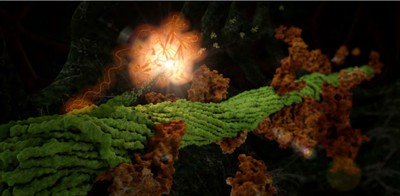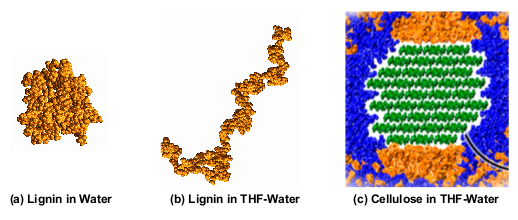
Lignocellulosic biomass is recalcitrant to deconstruction and saccharification due to its fundamental molecular architecture and multicomponent laminate composition. A fundamental understanding of the structural changes and associations that occur at the molecular level during biosynthesis, deconstruction, and hydrolysis of biomass is essential for improving processing and conversion methods for lignocellulose-based fuels and products. The objective of this research is to develop and demonstrate a combined neutron scattering and computer simulation technology for multiple-length scale, real-time imaging of biomass during pretreatment and enzymatic hydrolysis.

Production of ethanol by bioconversion of lignocellulosic biomass requires biomass pretreatment to increase the enzymatic digestibility of cellulose. Three major pretreatment regimes have been investigated, involving: aqueous solutions; co-solvents of water and organic solvents, such as THF; ionic liquids. We describe how those three pretreatment regimes change the structure of biomass components: cellulose, lignin and hemicellulose.

The full utilization of plant biomass for the production of energy and novel materials often involves high temperature heating/cooling cycles. High temperature is applied to soften lignin by enhancing its underlying atomic dynamics. Moreover, the hydration of the lignin is different in those process: biomass having a higher water content than isolated lignin has. However, a molecular-level description of the dependence on temperature and hydration of lignin dynamics is lacking. Molecular dynamics simulations were combined with neutron scattering and dielectric spectroscopy experiments to probe the dependence of lignin dynamics on hydration and thermal history. Hydration was found to always make lignin more dynamic. Further, at any given temperature and hydration during heating/cooling cycle, lignin was found to be more dynamic upon cooling than upon heating. Syringyl lignin units were found to be more dynamic than Guaiacyl, and aliphatic chains more dynamic than the aromatic rings.